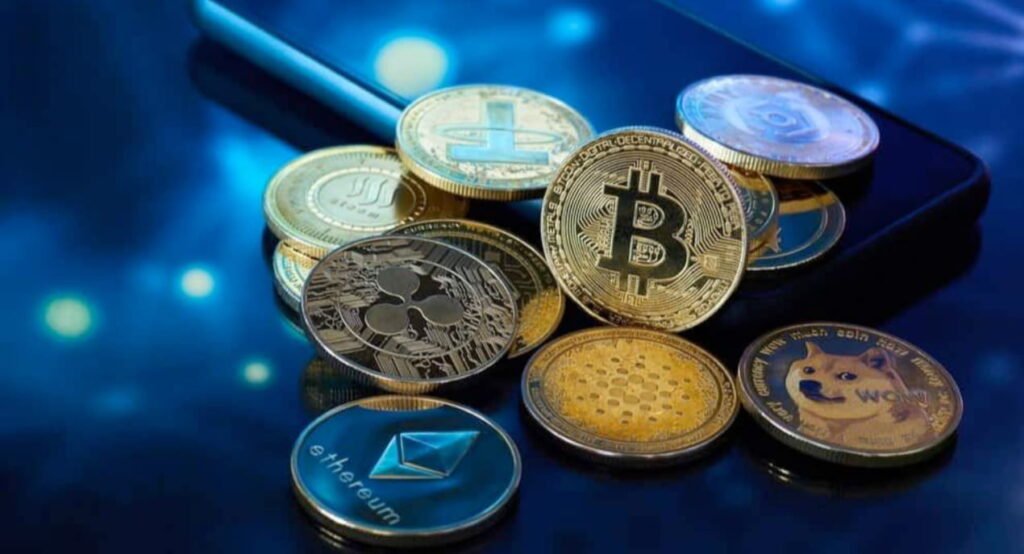Cryptocurrency has quickly gone from being a niche idea to a major threat to the world’s financial system. These digital assets are stored on decentralised networks called blockchains, which are protected by strong cryptography. Cryptocurrency lets people trade directly with each other without going through a middleman, unlike traditional currencies that central banks create. Bitcoin, the first cryptocurrency, came out in 2009. It solved the digital double-spend problem and introduced proof-of-work consensus. Over time, thousands of “altcoins”, or alternative coins, have come out, each with the goal of improving speed, privacy, programmability, or usefulness. Cryptocurrency Investing is becoming a part of everyday finance, as seen by modern markets. Retail traders, institutional investors, and corporate treasuries all own crypto now, which shows that it has become a mainstream asset class. The ecosystem includes wallets, exchanges, DeFi, and tokenised apps. There are various possibilities for users and entrepreneurs. Future of cryptocurrency
The Evolution of the Crypto Ecosystem
Ethereum came out in 2015 after Bitcoin and changed the game by adding smart contracts, which are pieces of code that run on the blockchain. Smart contracts made it possible for decentralised applications (dApps), DeFi protocols for lending and borrowing, automated market makers, and more. This change turned cryptocurrencies from just “digital gold” into a programmable money system. Innovators have built tools for staking, yield farming, decentralised exchanges, and non-fungible tokens (NFTs) to make them useful for more than just money.

Synergies are what make the crypto world work today. Users use wallets, which can be self-custodial or hosted, to connect to decentralised networks. Exchanges connect digital assets with traditional monetary systems. On-chain analytics solutions keep an eye on flows, whale activity, and the health of protocols. Crypto infrastructure keeps becoming better, making it easier for users, reducing friction, and making it safer via hardware wallets and multisig setups.
Tokenization of Real-World Assets
Blockchain now bridges the gap between physical and digital. Tokenisation converts tangible assets—real estate, artwork, and bonds—into digital tokens on-chain. This offers fractional ownership, 24/7 trading, and faster settlement. Institutional involvement is growing, with major financial firms launching tokenised asset services. As liquidity increases, tokenization is poised to unlock trillions in value and democratize access to alternative investments
AI-Blockchain Integration
The combination of artificial intelligence and blockchain is offering smarter, more autonomous systems. AI-powered trading bots optimise yields, detect fraud, and execute governance tasks. Decentralised AI networks are enabling collaborative model training, incentivised by tokens. By integrating AI algorithms on-chain, users can benefit from automated decision-making without sacrificing transparency or decentralisation.
The Road Ahead for Cryptocurrency
From the middle of 2025, cryptocurrency will continue to change. Improvements in scalability, privacy, and interoperability will make things easier to use. Institutional adoption will keep bringing in money and building infrastructure. Clear laws, especially on stablecoins, DeFi, and tokenised assets, will make it easier for more people to use these things in more areas.
Blockchain, the Internet of Things (IoT), artificial intelligence (AI), and decentralised identification systems will all work together to change how people and businesses interact online, store digital property, and make automatic agreements. The future of bitcoin isn’t just about money; it’s also about society. New uses are popping up in gaming, tracking the supply chain, digital rights, and socially responsible investing.
Central Bank Digital Currencies (CBDCs)
Governments are looking into CBDCs as a way to make payment systems more modern. Projects in China, Europe, and India are making progress towards making it easier for people to get loans, making it less dependent on currency, and making transfers across countries easier. CBDCs work in centralised systems, but they also work with decentralised assets. This makes for a hybrid global monetary environment. Finding a balance between privacy and oversight is still a big problem.
Sustainable and Regenerative Finance
The environmental impact of cryptocurrency mining—particularly energy-intensive proof-of-work systems—has been widely criticised. In response, the industry is adopting sustainable approaches such as proof-of-stake (which drastically reduces power consumption) and allocating blockchain proceeds toward environmental projects.

Regenerative finance (ReFi) initiatives, like token-supported reforestation and carbon credit tracking, are emerging. With sustainability in focus, crypto is aligning with global environmental goals.
Final thoughts
Regulating cryptocurrencies is no longer a choice; it’s going to happen. MiCA rules in the European Union have set tight rules for service providers and tokens to make sure they follow the rules and protect consumers. New laws about stablecoins in the United States are making it clearer what issuers are responsible for. Around the world, governments are setting up task groups, licensing systems, and tax systems. Some countries see crypto as a new way to do business, while others see it as a threat. This affects the global crypto policy landscape.
Everyone in the ecosystem benefits from clear rules. It gives institutional investors the confidence to become involved. It gives users safer access. And it lets technology grow without worrying about getting in trouble with the law. Crypto is set to keep growing around the world as governments move away from outright bans and towards frameworks based on openness and consumer protection.




















